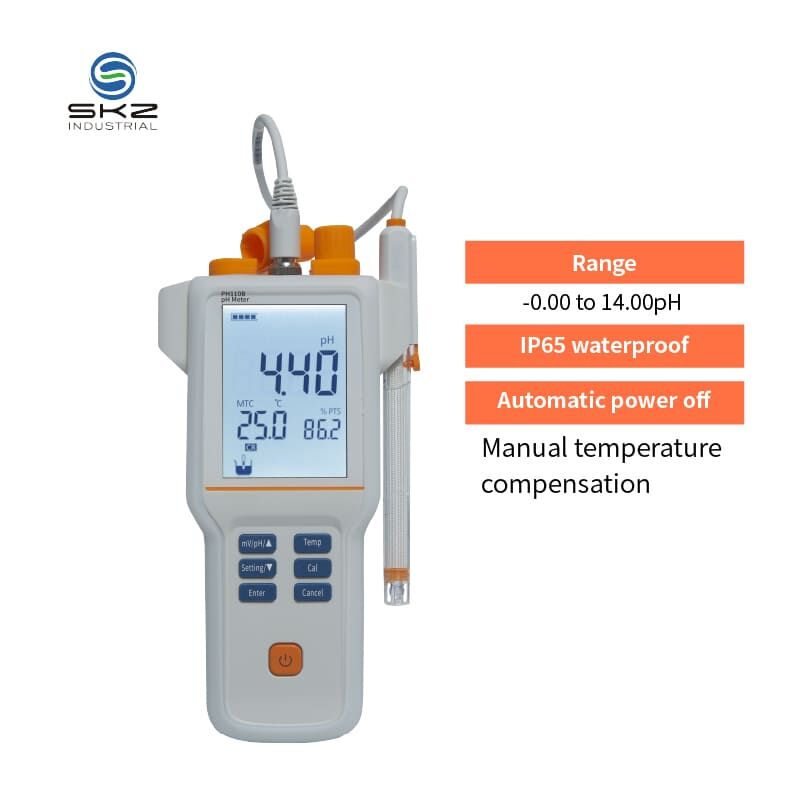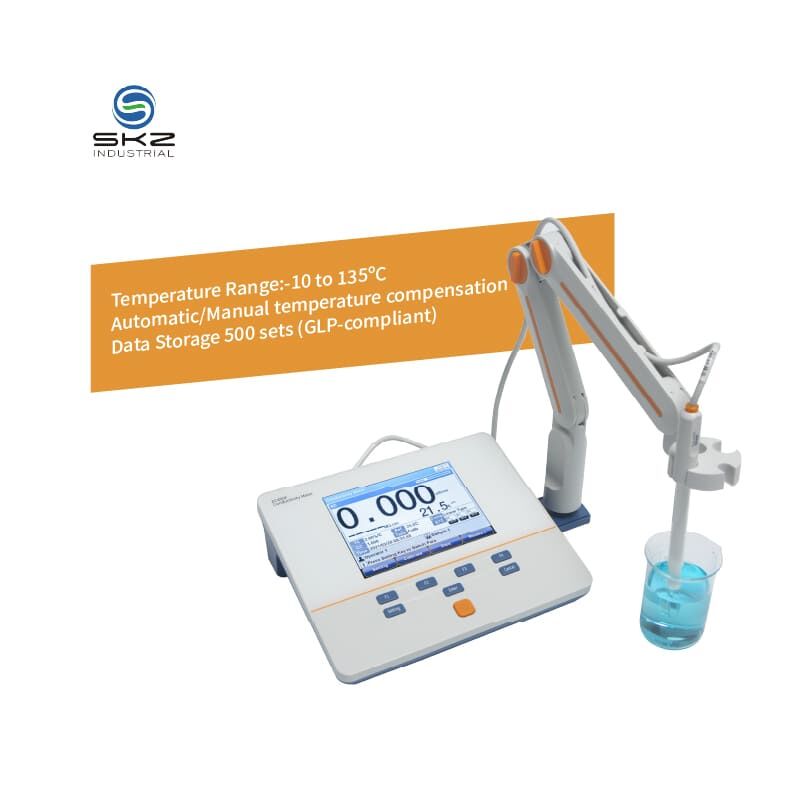Structural Features of pH Tester
High resolution LCD display, 5.7 inches.
Automatic/Manual temperature compensation ensures electrical conductivity meter accurate results.
Reset feature automatically resumes digital conductivity meter all settings back to factory default options.
Multi-reading feature allows electrical conductivity meter auto-read, timed-read and continuous-read.
Auto-hold feature senses and locks the measurement endpoint.
IP54 waterproof.






